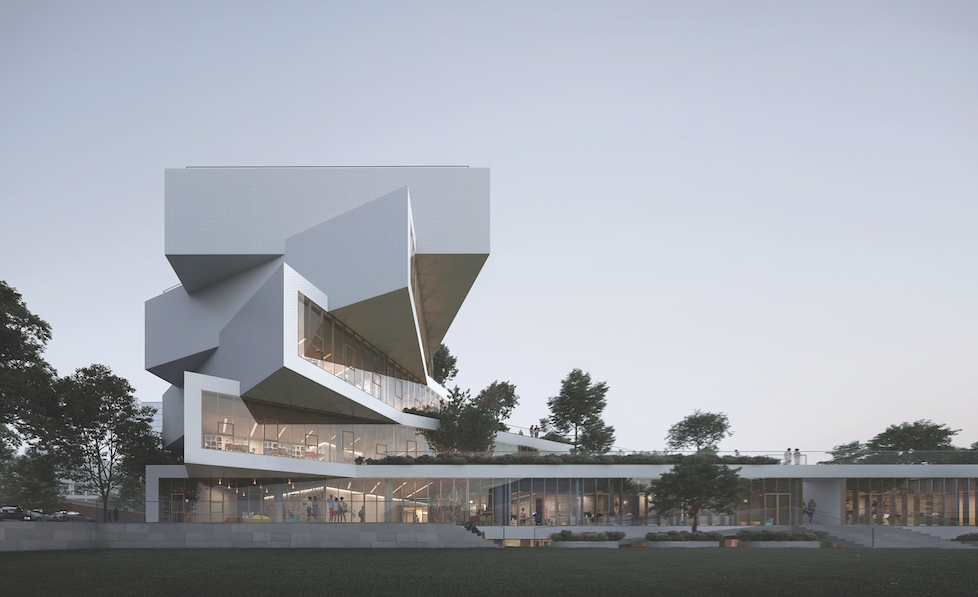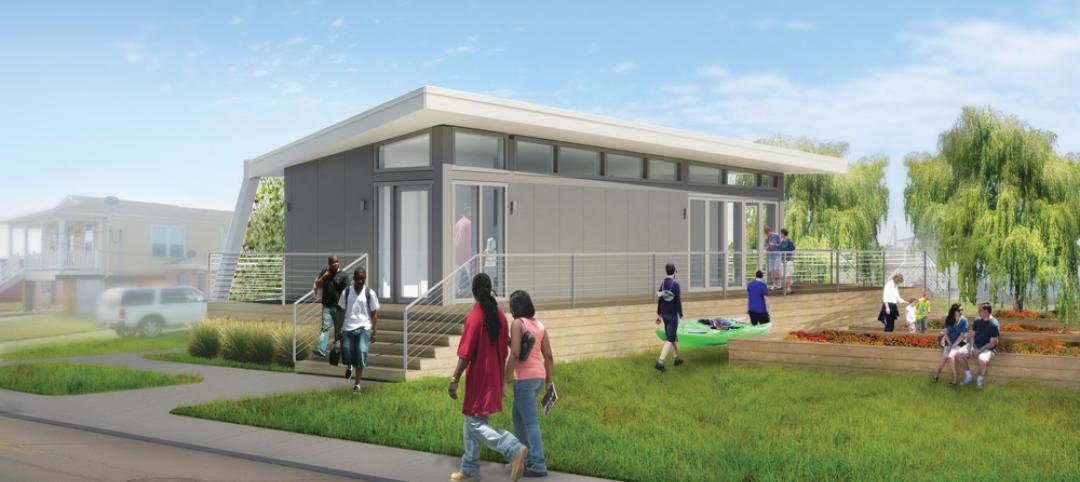Personalized learning tailored to the needs of individual students, coupled with group projects, is taking hold in the nation's schools. “We can’t just line up students in rows and teach everybody the same way, at the same pace,” says Leanne Meyer-Smith, AIA, LEED AP, VP of Architecture with Wight & Company. “That’s not working.”
In terms of school design, no single template has taken hold, but one thing is certain: long, double-loaded corridors are a thing of the past.
Improved economic conditions have freed up money for new projects and renovations. There’s a sense of urgency to update facilities to make up for the time lost when the Great Recession stymied many projects. “We’ve been seeing a lot more success with school funding referendums,” says Steve Herr, AIA, Director of Design, Fanning Howey.
See also: Top 150 K-12 Architecture + AE Firms - 2018 Giants 300 rankings
See also: Top 75 K-12 Engineering + EA Firms - 2018 Giants 300 rankings
See also: Top 90 K-12 Construction + CM Firms - 2018 Giants 300 rankings
Designing schools that can accommodate the pedagogy of today and the teaching styles of tomorrow is educated guesswork. “You have to allow for evolving instructional models without forcing tremendous expense to reconfigure spaces,” says Sean O’Donnell, FAIA, LEED AP, Principal and Practice Area Leader, Primary Education, with Perkins Eastman. Providing a little extra room and flexibility is crucial.
Extra space for learning and socializing can be created in common areas, where students can study and collaborate on projects in nooks and crannies around the school. “Interstitial spaces are really important,” says O’Donnell.
The building core at the Wilson School, a new 775-student high school under construction in Arlington, Va., will feature a wide staircase that opens out to the lobby, which will double as a gathering place for students. “We typically see that type of space in a university setting,” says Andrew Graham, AIA, Associate with Leo A Daly, the project’s design architect, along with Bjarke Ingels Group.
Even renovations of old double-loaded corridors can get at least part of the way to a modern design. Provided there's sufficient structural support in place, interior walls can be removed and track-mounted wall systems can be installed. “When you open up the walls, the corridor disappears and becomes a learning space,” says Lance Tritsch, LEED AP, Project Director, Pepper Construction.
Even when structural alterations are not possible, spaces can still be reconfigured at relatively low cost. “There’s a lot you can do with agile furniture,” says Meyer-Smith. Classrooms can be spruced up with new carpeting, plush pillows, and strategically placed bookshelves as dividers.
K-12 school designers are also using the increasing body of scientific evidence that links the interior environment to student performance as they pitch design ideas to district officials. Daylighting and indoor air quality are always on the front burner in these discussions.
Acoustic clarity within the classroom is also a major consideration. “If students can’t hear the teacher clearly, their ability to learn is impaired,” says Laura Wernick, FAIA, REFP, LEED AP, Senior Principal with HMFH Architects. Reducing noise is especially critical for children with ADHD, a condition exacerbated by excessive stimuli.
HMFH brings in experts at various stages of the project to measure and analyze classroom acoustics. This enables designers and contractors to identify noise problems early, before they get too expensive to fix, says Chin Lin, AIA, LEED AP, Senior Associate with HMFH.

Wilson School, Arlington, Va
Children with ADHD and other conditions that are made worse by excessive stimuli can benefit from the use of tunable LEDs, says Lin. “Dimming and providing warmer tones through lighting is calming,” he says. With color-tunable lighting currently costing about twice as much as standard lighting, schools are likely to use the more expensive options in special needs classrooms where they can do the most good.
The trend toward more hands-on learning remains strong. STEAM and STREAM (the “R” is for robotics) curricula often include maker spaces equipped with 3D printers. O’Donnell says “flight lounges"—areas adjacent to maker spaces, where teachers from different subject areas can get together to devise interdisciplinary teaching strategies and hands-on student projects—are coming into vogue.
getting students out into the world
High schools are also experimenting with giving students real-world business experience. The new Carmel (Ind.) High School has a 2,000-sf space for a student-run coffee shop and retail outlet featuring school-themed clothing and gear. Students perform all the managerial, accounting, marketing, graphics, and communication tasks to run the business. There's even a “Shark Tank,” where students can pitch ideas using whiteboards and high-end presentation tools.
A 30,000-sf space in a repurposed warehouse at the Brooklyn (N.Y.) Navy Yard is dedicated to the STEAM Center, where 11th and 12th graders from Brooklyn schools spend half of each day learning vocational and technical skills such as engineering, design, construction, film and media, and culinary arts.
“Students are introduced to companies in the Navy Yard and have the opportunity to participate in internships,” says Christine Schlendorf, AIA, Principal with Perkins Eastman.
Related Stories
| Nov 17, 2014
Nearly two years after Sandy Hook, the bloodshed continues
It’s been almost two years since 20 first-graders were shot and killed at Sandy Hook Elementary School in Newtown, Conn., but these incidents, both planned and random, keep occurring, writes BD+C's Robert Cassidy.
K-12 Schools | Nov 6, 2014
New Sandy Hook school features could influence security standards
The design of the new Sandy Hook Elementary School on the site of the 2012 Newtown, Conn., school shooting features enhanced security measures—some subtle and others more prominent.
| Nov 3, 2014
ASSA ABLOY announces sponsorship of Safe and Sound Initiative
ASSA ABLOY, the global leader in door opening solutions, has signed on as a platinum sponsor of Safe and Sound, an organization founded by families directly affected by the December 14, 2012 tragedy at Sandy Hook Elementary School.
Sponsored | | Oct 29, 2014
Historic Washington elementary school incorporates modular design
More and more architects and designers are leveraging modern modular building techniques for expansion projects planned on historical sites. SPONSORED CONTENT
| Oct 26, 2014
Study asks: Do green schools improve student performance?
A study by DLR Group and Colorado State University attempts to quantify the student performance benefits of green schools.
| Oct 21, 2014
Check out BD+C's GreenZone Environment Education Classroom debuting this week at Greenbuild
At the conclusion of the show, the modular classroom structure will be moved to a permanent location in New Orleans' Lower 9th Ward, where it will serve as a community center and K-12 classroom.
| Oct 16, 2014
Perkins+Will white paper examines alternatives to flame retardant building materials
The white paper includes a list of 193 flame retardants, including 29 discovered in building and household products, 50 found in the indoor environment, and 33 in human blood, milk, and tissues.
Sponsored | | Oct 16, 2014
Mill Brook Elementary School colors outside the lines with creative fire-rated framing solution
Among the building elements contributing to the success of the elementary school’s public learning areas is a fire-rated stairwell that supports the school’s vision for collaboration. HMFH Architects designed the stairwell to be bright and open, reflecting the playful energy of students. SPONSORED CONTENT
| Oct 15, 2014
Harvard launches ‘design-centric’ center for green buildings and cities
The impetus behind Harvard's Center for Green Buildings and Cities is what the design school’s dean, Mohsen Mostafavi, describes as a “rapidly urbanizing global economy,” in which cities are building new structures “on a massive scale.”
| Oct 12, 2014
AIA 2030 commitment: Five years on, are we any closer to net-zero?
This year marks the fifth anniversary of the American Institute of Architects’ effort to have architecture firms voluntarily pledge net-zero energy design for all their buildings by 2030.














